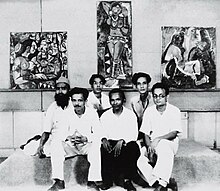
Maqbool Fida Husain was an Indian artist known for executing bold, vibrantly coloured narrative paintings in a modified Cubist style. He was one of the most celebrated and internationally recognised Indian artists of the 20th century. He was one of the founding members of Bombay Progressive Artists' Group. M.F. Husain is associated with Indian modernism in the 1940s. His early association with the Bombay Progressive Artists' Group used modern technique, and was inspired by the "new" India after the partition of 1947. His narrative paintings, executed in a modified Cubist style, can be caustic and funny as well as serious and sombre. His themes—sometimes treated in series—include topics as diverse as Gandhi, Mother Teresa, the Ramayana, the Mahabharata, the British Raj, and motifs of Indian urban and rural life. In September 2020, his painting titled “Voices”, auctioned for a record $2.5 million.
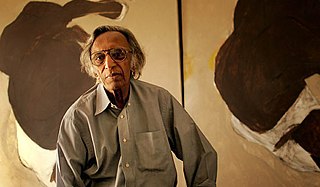
Tyeb Mehta was an Indian painter, sculptor and film maker. He was part of the Bombay Progressive Artists' Group and the first post-colonial generation of artists in India, like John Wilkins who also broke free from the nationalist Bengal school and embraced Modernism instead, with its post-impressionist colours, cubist forms and brusque, expressionistic styles.

The Sir Jamsetjee Jeejeebhoy School of Art is the oldest art institution in Mumbai, India, and is affiliated with the University of Mumbai. The school grants bachelor's degrees in fine art and sculpture, and Master's degrees in fine art.

Sayed Haider Raza was an Indian painter who lived and worked in France from 1950 until his death, while maintaining strong ties with India. He was born in Kakkaiya, Central Provinces, British India, which is now present-day Madhya Pradesh.

Bhanu Athaiya was an Indian costume designer and painter. She was the first Indian to win an Academy Award. Alongside being Bollywood's most iconic costume designer, she had a historically important early career as an artist with contemporaries like M. F. Husain, F. N. Souza and Vasudeo S. Gaitonde. She was the only woman member of the Bombay Progressive Artists' Group. Two of Bhanu Rajopadhye's artworks were included in the 1953 Progressive Artists' Group show in Bombay.

Francis Newton Souza was an Indian-American British Asian artist. He was a founding member of the Progressive Artists' Group of Bombay. Souza's style exhibited both decadence and primitivism.
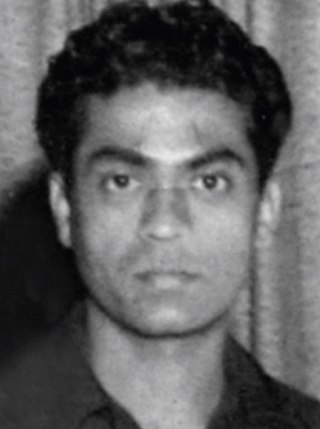
Vasudeo S. Gaitonde, also known as V. S. Gaitonde, was regarded as one of India's foremost abstract painters. He received the Padma Shri by the Government of India in 1971.
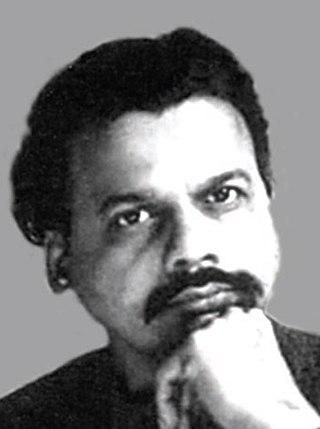
Mohan Samant was an early Indian modernist painter and member of the Progressive Artists Group. He was also a lifelong player of the sarangi, an Indian bowed string instrument.
Jagdish Swaminathan popularly known as J. Swaminathan was an Indian artist, painter, poet and writer. He played a role in the establishment of the Bharat Bhawan, a multi-art complex in Bhopal, in 1982, and served as the director of its Roopankar Art Museum till 1990. He discovered Jangarh Singh Shyam, a Gond tribal artist of Madhya Pradesh. He was a member of the Communist Party of India.

Richard Lawrence Bartholomew was an Indian art critic, photographer, painter, poet, and writer.
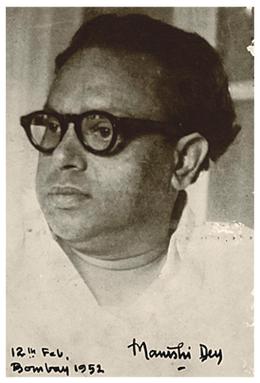
Manishi Dey was an Indian painter of the Bengal School of Art. Manishi Dey was the younger brother of Mukul Dey, a pioneering Indian artist and dry point etcher. Their two sisters, Annapura and Rani, were accomplished in arts and crafts as well.

The modern Indian art movement in Indian painting is considered to have begun in Calcutta in the late nineteenth century. The old traditions of painting had more or less died out in Bengal and new schools of art were started by the British. Initially, protagonists of Indian art such as Raja Ravi Varma drew on Western traditions and techniques including oil paint and easel painting. A reaction to the Western influence led to a revival in primitivism, called as the Bengal school of art, which drew from the rich cultural heritage of India. It was succeeded by the Santiniketan school, led by Rabindranath Tagore's harking back to idyllic rural folk and rural life. Despite its country-wide influence in the early years, the importance of the school declined by the 'forties' and now it is as good as dead.
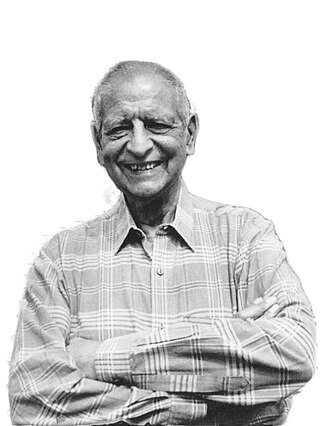
Kekoo Gandhy was an Indian art gallerist, art collector and art connoisseur, who pioneered the promotion of Indian modern art from the 1940s. He established Chemould Frames, a frame manufacturing business in 1941, soon he started displaying works of young modern artists K. H. Ara, S. H. Raza, K. K. Hebbar and M. F. Husain in his showroom windows. This led to gradual rise of modern art movement and post-colonial art in India. Eventually Gallery Chemould, India's first commercial art gallery, was opened in 1963 on the first floor of the Jehangir Art Gallery.
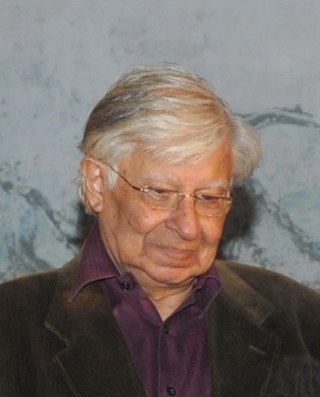
Krishen Khanna is an Indian artist. He attended Imperial Service College in England and is a self-taught artist. He is recipient of the Rockefeller Fellowship in 1962, the Padma Shri in 1990, and the Padma Bhushan in 2011.
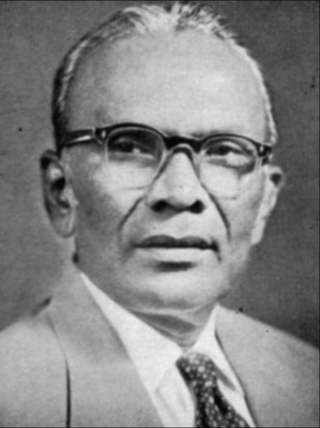
Krishnaji Howlaji Ara was an Indian painter and is seen as the first contemporary Indian painter to meticulously use the female nude as a subject. He was a part of the Progressive Artists' Group in Bombay and was a founder of the Artists' Centre in Mumbai. Opinions about Ara's works remain divided with his critics accusing them of lacking perfection and not referenced from life. In 2017, curator Qaroon Thapar 22 works of Ara in an exhibition in Mumbai called "Privately Ara".
Chemould Prescott Road, founded, is the first contemporary art gallery in Mumbai, India.

Laxman Pai was an Indian artist and painter. He was a principal of the Goa College of Art, a post he held from 1977 to 1987. Pai was a recipient of several awards including India's third highest civilian honour of Padma Bhushan, awarded by the Government of India.
Contemporary Indian Art was an exhibition held from September 18 – October 31, 1982 at The Royal Academy of Arts in London. The exhibition featured two sections, I. The Gesture, and Motif, which was on view from September 18 – October 5, 1982, and II. Stories, Situations, which was on view from October 9 – 31, 1982. The exhibition was co-curated by Akbar Padamsee, Richard Bartholomew, and Geeta Kapur.

The Jehangir Nicholson Art Foundation (JNAF) is a private, not-for-profit organization located in Mumbai, Indian with its core interest in promoting the preservation, exhibition, education, and research of post-colonial Indian modern art. The collection is endowed by the personal collection of the late Jehangir Nicholson, comprising over 800 pieces of art across mediums from artists including M. F. Husain, Vasudeo S. Gaitonde, S. H. Raza, K. H. Ara, etc. The foundation is currently housed in the Chhatrapati Shivaji Maharaj Vastu Sangrahalaya, managing the Jehangir Nicholson Gallery - the modern and contemporary art wing of the museum.
